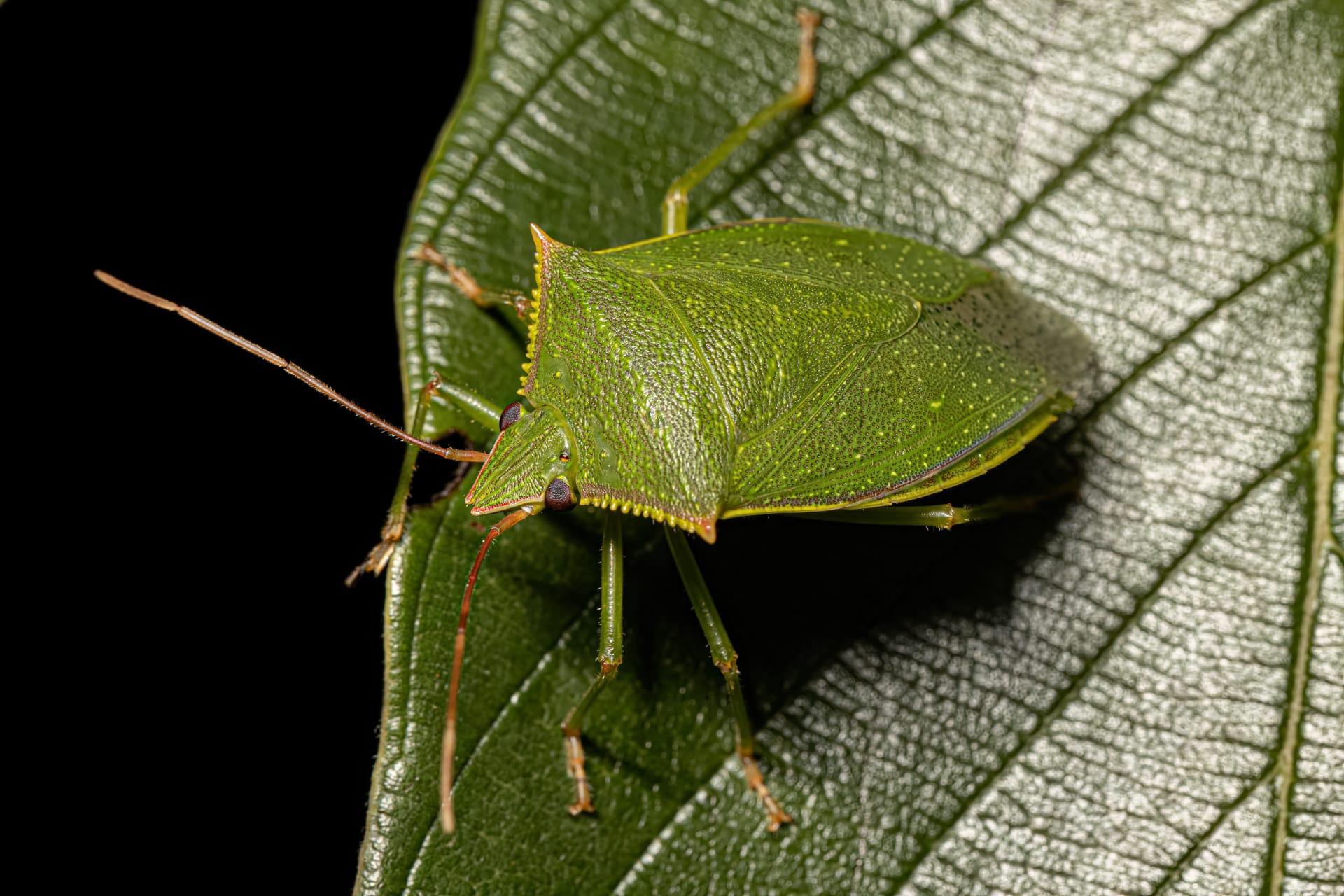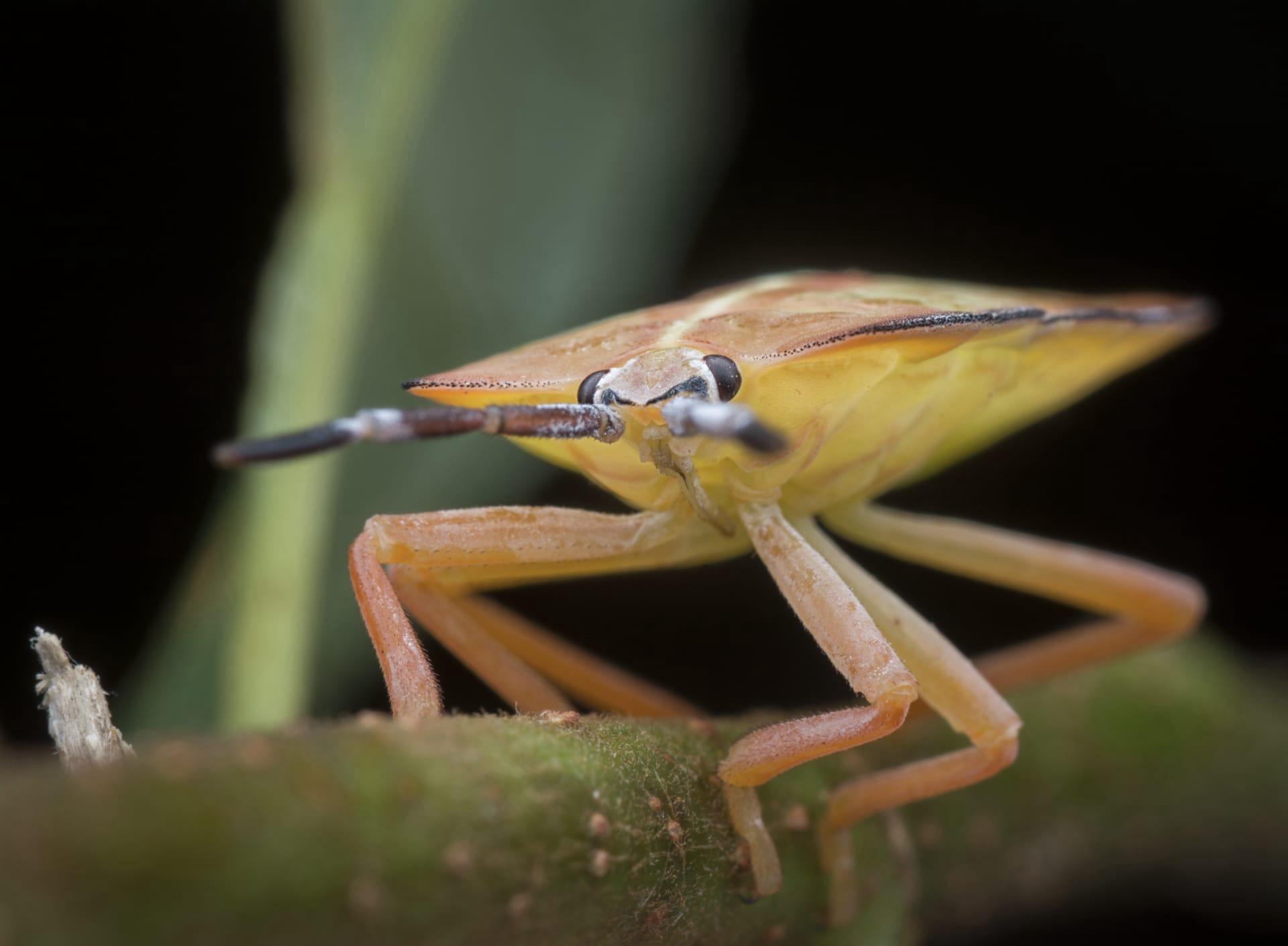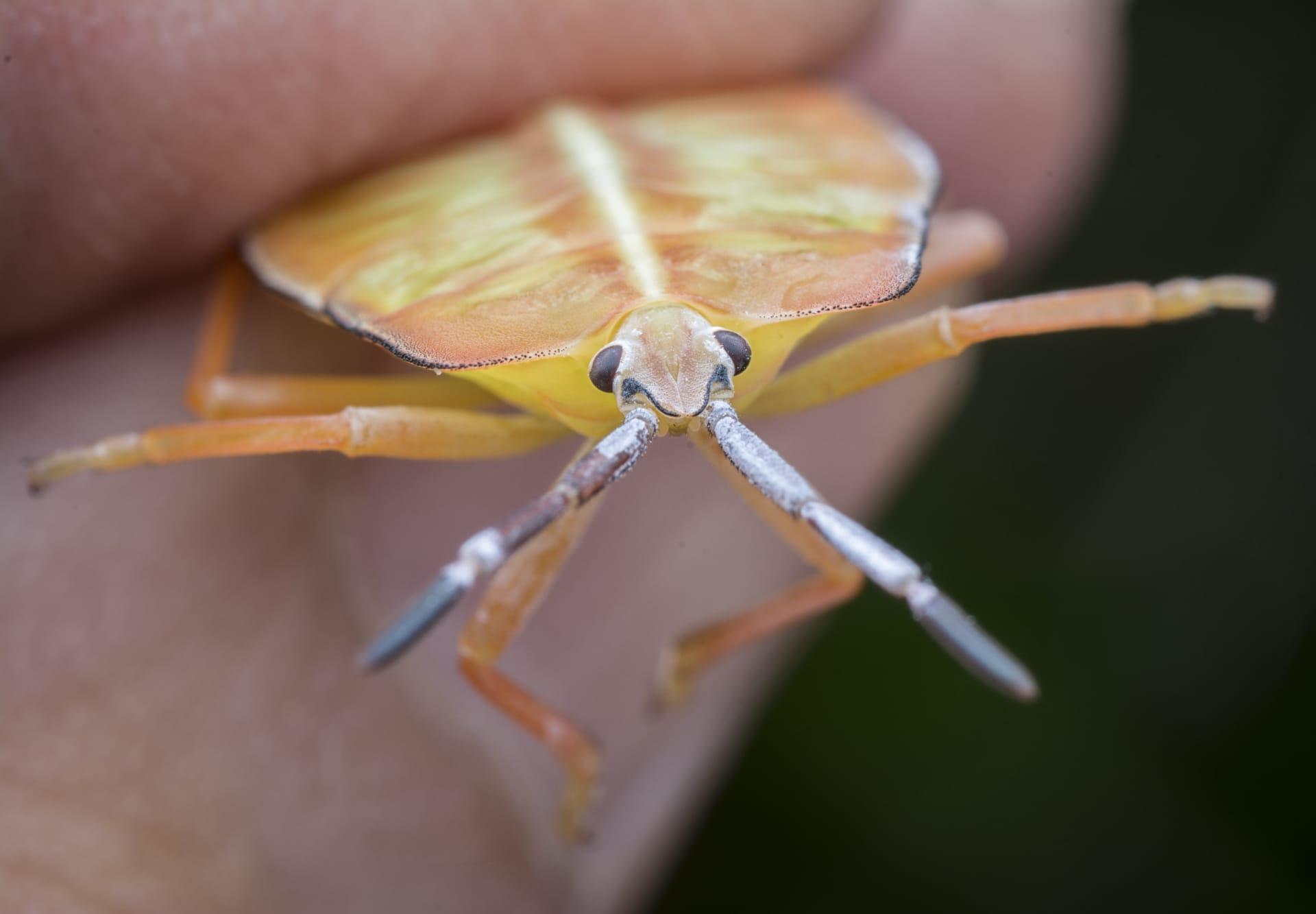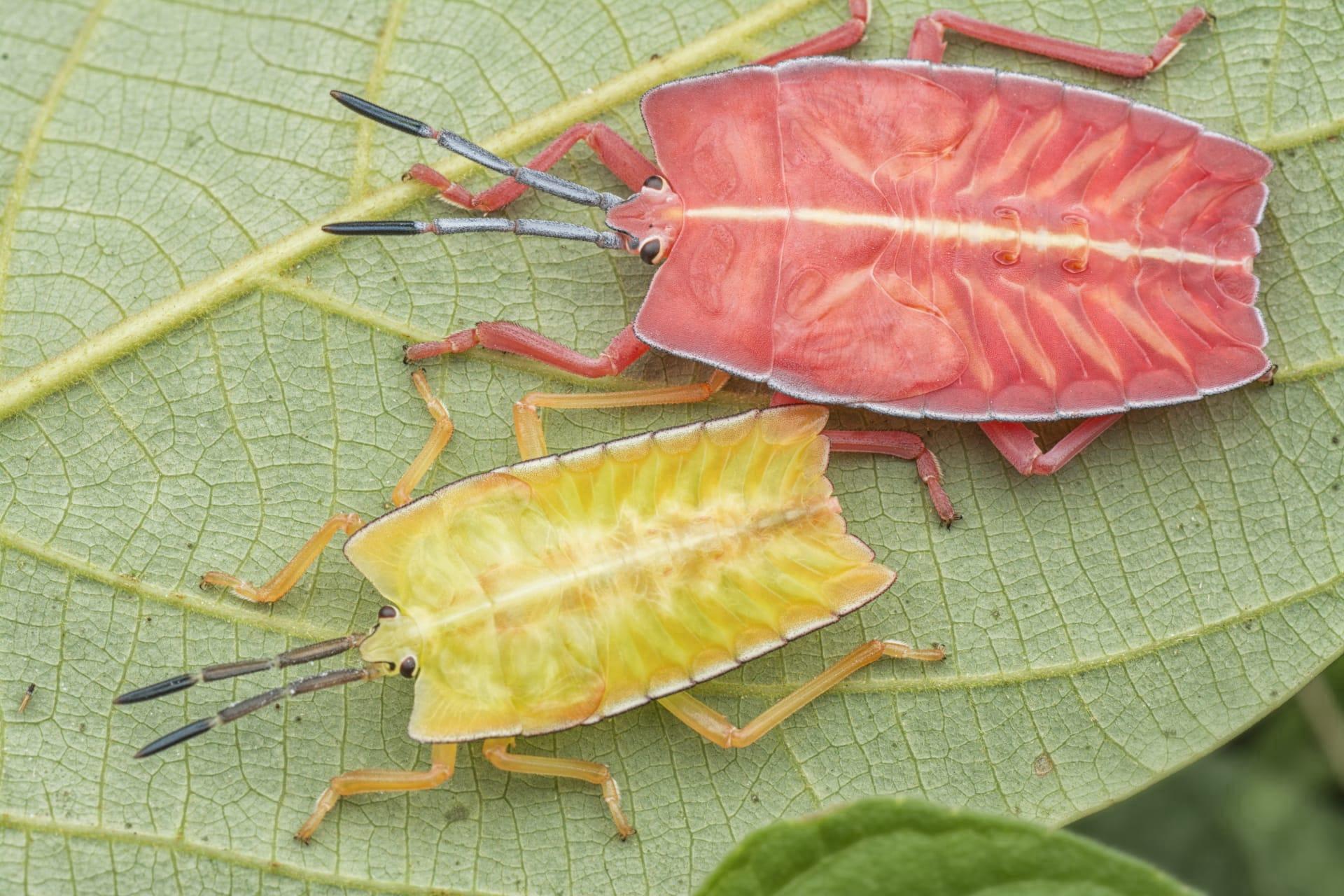Shield Bug
- Home /
- Mini Encyclopedia /
- Animal /
- Shield Bug
1
Shield Bugs, known scientifically as the Pentatomidae family, are part of the order Hemiptera, which includes true bugs. This family is large and diverse, with over 4,700 species grouped into about 900 genera worldwide. Their most distinctive feature is the shield-like shape of their thorax, which is where they get their name. They are also known as stink bugs due to their ability to excrete a foul-smelling liquid as a defense mechanism. These bugs are mainly found in temperate and tropical regions, with a wide range of species in both areas.
Regarding their distribution, Shield Bugs are found on every continent except Antarctica. Their prevalence is particularly notable in North and South America, Africa, and Asia. In the United States, they are commonly seen in gardens and agricultural fields. Different species of Shield Bugs have adapted to various environments, from lush forests to arid deserts. Their adaptability to different climates and habitats is one of the reasons for their widespread distribution. This adaptability is also reflected in their diet, which includes a wide range of plants and sometimes other insects, contributing to their successful distribution in various regions.

2
Question: Is it true that all Shield Bugs are harmful to crops?
Answer: This is a common misconception. While some species of Shield Bugs are considered agricultural pests due to their tendency to feed on crops like fruits, vegetables, and grains, not all species are harmful. In fact, some species of Shield Bugs are beneficial as they prey on other insects that are harmful to crops. Therefore, it's important to identify the specific species of Shield Bug before determining its impact on agriculture. The damage caused by pest species can be significant, but the ecological role of beneficial species in controlling pest populations should not be overlooked.

3
One survival strategy of Shield Bugs is their use of chemical defenses. Many species can produce a foul-smelling secretion from glands located on their thorax. This secretion is used to deter predators and is effective against a range of potential threats, including birds and lizards. The chemical composition of this secretion varies among species and can cause irritation or even temporary blindness in some predators.
Another survival strategy is their mimicry and camouflage. Shield Bugs often have body colors and patterns that blend in with their surroundings, making them less visible to predators. Some species mimic the appearance of more dangerous insects or even bird droppings, further reducing the likelihood of being noticed. This ability to blend in is crucial for their survival, especially during the early stages of their life cycle when they are more vulnerable to predation.

4
In ecosystems, Shield Bugs play a dual role, both as pests and as part of the food chain. As pests, certain species can cause significant damage to crops and ornamental plants by feeding on their sap. This can result in reduced crop yields and economic loss, particularly in agricultural settings. However, their role as pests is balanced by their position in the food web, where they serve as prey for a variety of animals, including birds, spiders, and other insects.
The ecological role of Shield Bugs extends beyond being prey. Some species are important pollinators, contributing to the reproduction of several plant species. Additionally, predatory Shield Bugs help control populations of other insects, which can be beneficial in managing pest species in agriculture and gardens. This natural pest control contributes to the ecological balance and can reduce the need for chemical pesticides.

5
Film: "Bugs of the World: The Shield Bug" is a British documentary released in 2020. It explores the diverse world of Shield Bugs, their behavior, habitats, and the role they play in various ecosystems. The film provides insight into how these insects adapt to different environments and their interactions with other species. It's praised for its stunning macro photography and in-depth analysis of Shield Bugs' life cycle.
Book: "The Secret World of Stink Bugs: Unveiling the Shield Bug" by Dr. John H. Martin, published in the United States in 2018, offers a comprehensive look into the life of Shield Bugs. The book covers various species, their distribution, biology, and impact on agriculture and ecosystems. Martin's work is notable for its accessible language and detailed illustrations, making it a valuable resource for both entomologists and general readers.
Book: "Insects Unearthed: Shield Bugs" by Dr. Emma Thompson, published in Canada in 2021, delves into the less-known aspects of Shield Bug biology and ecology. The book highlights the importance of these insects in biodiversity and their role in ecological balance. Thompson combines scientific research with engaging narratives to bring the world of Shield Bugs closer to the reader, making it an enlightening read for anyone interested in entomology and environmental science.